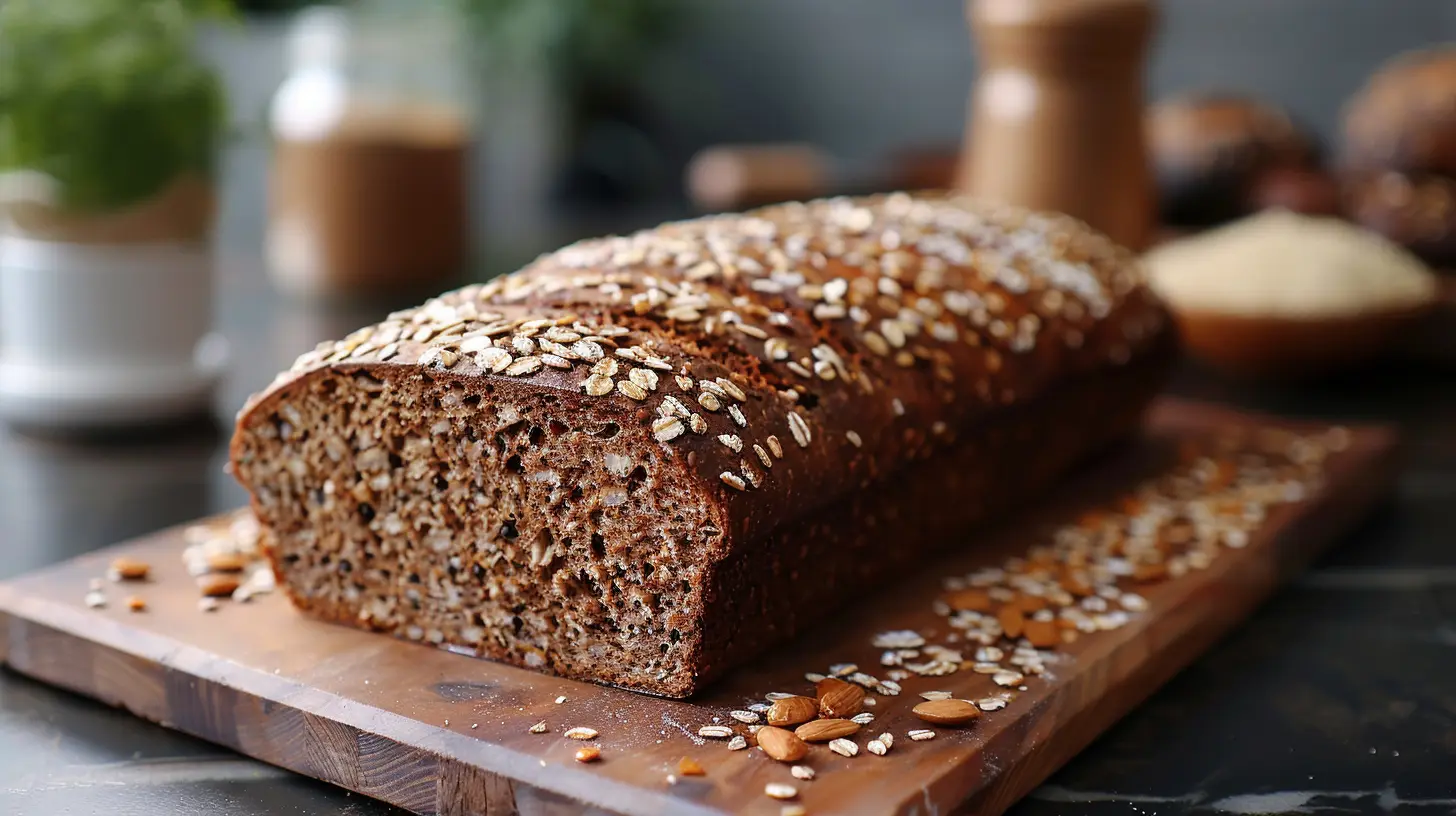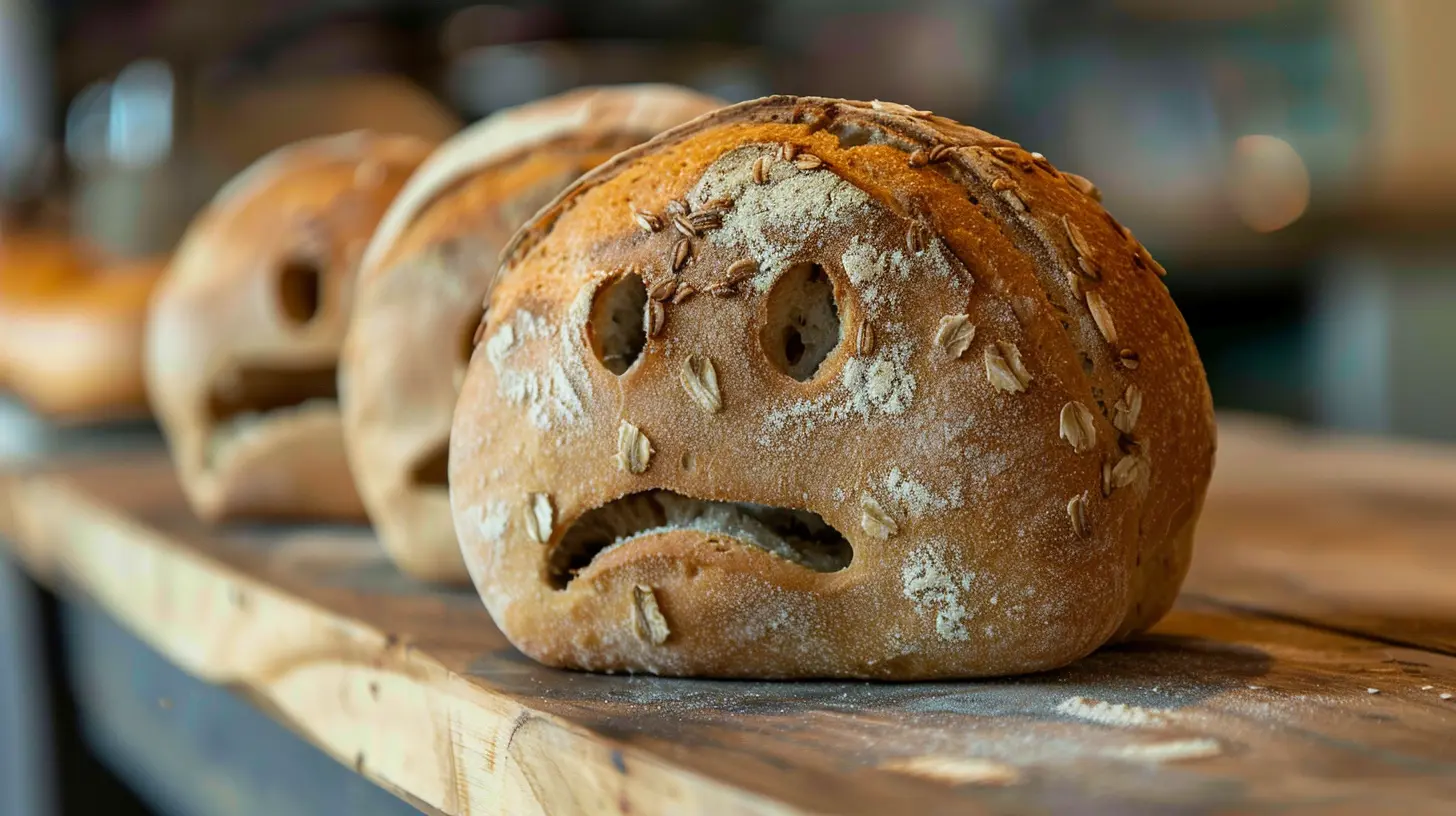Reintroducing Gluten After Elimination: What You Should Know
1 July 2025
If you've ever cut gluten out of your diet — maybe due to suspected sensitivity, digestive issues, or on the advice of your doctor — then you know it’s more than just skipping bread and pasta. Gluten hides in so many places! But what happens when you’re ready for reintroduction? Is it as simple as grabbing a slice of pizza and seeing how you feel?
Not exactly.
Reintroducing gluten after an elimination period isn’t something you want to rush. Your body’s been in a different rhythm without it, and you don't want to trigger unnecessary symptoms or confusion. Whether you did an elimination diet out of curiosity or to manage symptoms, this guide will walk you through the best way to welcome gluten back into your life — if it turns out you can tolerate it in the long run.
Let’s dig into what you should actually know before reintroducing gluten after elimination.
Why Did You Eliminate Gluten in the First Place?
First things first — let’s rewind. Why did you eliminate gluten at all? Your reason determines your next steps.Did you:
- Suspect you had a gluten sensitivity?
- Have digestive issues like bloating, gas, or brain fog?
- Follow an elimination diet recommended by your doctor or nutritionist?
- Go gluten-free as part of a popular diet trend?
If you removed gluten without a clear diagnosis (like celiac disease), then testing your body’s tolerance is a logical step. But if you were diagnosed with celiac disease or a wheat allergy, reintroducing gluten is a serious no-go. In fact, for celiac, gluten should be avoided permanently because it damages your intestines — even if you don’t feel immediate symptoms.
But if you're in the non-celiac gluten sensitivity (NCGS) camp or you eliminated gluten for exploratory reasons, you might just be able to bring it back safely.
What Is Gluten, Really?
Before we get into the nitty-gritty of reintroduction, it helps to understand what gluten actually is.Gluten is a protein found in grains like wheat, barley, and rye. It gives bread that chewy texture and helps keep baked goods from crumbling apart. But for some people, gluten can cause issues ranging from mild digestive discomfort to serious immune reactions — hence the rise of gluten-free diets.
It’s easy to villainize gluten, but for those who can tolerate it, gluten-containing foods can provide important nutrients like fiber, B vitamins, and iron.
Bottom line: Gluten isn't inherently bad. The key is figuring out how your body responds to it.
The Purpose of the Elimination Phase
The elimination phase is like clearing the static so you can hear the music.For people who feel off — think fatigue, bloating, joint pain, brain fog — removing gluten for 2-6 weeks can give the body a reset. During this time, it’s easier to identify whether gluten might be triggering symptoms, especially when removed alongside other potential irritants (like dairy or soy).
But here’s the catch — the elimination phase is only half the equation. The goal is to reintroduce foods one by one to get clarity, not cut them out forever unless necessary. This leads us to the reintroduction phase.
When Is It Safe to Reintroduce Gluten?
Timing matters.Generally, you’ll want to reintroduce gluten after your body has settled into a new, stable normal on the elimination diet. No bloating? Energy returning? Digestive system calm? That’s a green light to consider testing gluten again.
Most experts recommend waiting at least 2-4 weeks, but longer might be needed if you had more severe symptoms. Just remember: patience is key. Trying to rush the process can muddy the waters and make it harder to figure out what’s really bothering your system.
If you're working with a nutritionist or doctor, they can give you the thumbs-up when it’s the right time.
Step-by-Step Guide to Reintroducing Gluten
Okay, so you’re ready. How do you actually do it?Don't dive headfirst into a gluten-filled weekend buffet. Instead, ease into it like you're dipping your toes into cold water.
1. Pick One Type of Gluten Food
Start with a small serving from a clean, simple gluten-containing food. Think:- A slice of whole wheat bread
- A half-cup of cooked barley
- A wheat cracker or two
Avoid foods with other potential triggers like sugar, dairy, or processed oils (sorry, donuts don’t count here). You want to isolate gluten and reduce other variables.
2. Monitor Your Body for 72 Hours
After eating the test food, take a break. Don’t introduce any new foods for the next 2–3 days. Pay attention to how you feel — not just physically, but mentally too.Watch for symptoms like:
- Bloating or abdominal discomfort
- Brain fog
- Fatigue
- Joint pain
- Skin flare-ups
- Mood swings
Keep a journal or use a food tracking app to note what you ate and how you felt.
3. Increase the Amount Gradually
If your body seems cool with the first test, try a slightly larger portion a few days later. Maybe now you’re ready for a small bowl of whole wheat pasta or a sandwich on multigrain bread.Repeat the same observation window. Continue ramping up slowly over the coming week or two.
4. Try Different Forms of Gluten
Once you’ve handled basic wheat, experiment with other sources like rye bread or barley soup. Each grain has slight variations in its gluten structure, so your body might respond differently.But again — one at a time, with space in between.
What If You React?
So maybe you had a bagel for breakfast and now you’re dealing with digestive chaos. Don’t panic.It doesn’t necessarily mean you have a full-blown gluten intolerance. It could be:
- A temporary reaction from not having gluten for a while
- An issue with another ingredient (like dairy or yeast)
- A result of overdoing it too fast
The short-term fix? Hit pause. Back off the gluten, treat your symptoms (hydration, gentle foods, maybe a bit of ginger or peppermint), and try again in a few weeks with a smaller dose.
If the reaction was intense — like diarrhea, hives, or joint pain — it’s worth consulting a medical professional or dietitian. You may have an allergy or sensitivity that needs more digging.
Don't Skip the Medical Testing
Here’s something super important: if you suspect you might have celiac disease or serious gluten intolerance, don’t go gluten-free before testing. This can actually skew your results.Celiac testing measures how your body responds to gluten, so you need to be currently eating it for the results to be accurate. If you’ve already cut it out, the antibodies may have dropped and the tests might give a false-negative. This is why it's often recommended to get tested before eliminating gluten.
If you’ve already been gluten-free for a while and want accurate testing, you might need to do a monitored gluten challenge under a doctor’s supervision.
Long-Term Tips for Living with or without Gluten
Let’s say you reintroduced gluten and your body gave it the thumbs-up. Great! You now know you’re not sensitive, and you can include a full spectrum of grains and foods in your diet again.On the flip side, maybe gluten just doesn’t sit well with you. That’s okay too. The goal is personal body literacy — understanding what works for you, not following diet trends blindly.
Here are some takeaway tips no matter where you land:
If You Can Eat Gluten:
- Choose whole grains over refined ones.- Aim for variety — oats, quinoa, brown rice, barley, wheat, and rye.
- Don’t fall into the “gluten = bad” trap; many cultures thrive on wheat-based diets.
If You Can't Tolerate Gluten:
- Stick to naturally gluten-free grains like rice, quinoa, millet, sorghum, and teff.- Watch out for hidden sources (soy sauce, gravies, processed snacks).
- Load up on fruits, veggies, lean proteins, and whole, unprocessed foods.
- Work with a dietitian to prevent nutrient deficiencies (B vitamins, iron, fiber).
Final Thoughts: Listen to Your Gut (Literally)
Reintroducing gluten after elimination is a learning experience. It’s your chance to tune into your body’s signals and get real feedback — not from a fad, but straight from your own biology.Remember, not every reaction points to a problem. And not every person needs to live gluten-free. We’re all different, and your diet should reflect your individual needs, not just popular trends.
There’s no shame in choosing to eat gluten — or not. What’s important is that it’s an informed, intentional decision based on how your body actually feels. So whether you're grabbing a slice of sourdough or sticking to quinoa, make it your choice, backed by knowledge and self-awareness.
You've got this.
all images in this post were generated using AI tools
Category:
Gluten FreeAuthor:

Angelo McGillivray
Discussion
rate this article
2 comments
Carson Turner
Embrace gradual reintroduction of gluten; discover your body’s response and reclaim vitality!
November 21, 2025 at 4:06 PM

Angelo McGillivray
Thank you for your insightful comment! Gradual reintroduction can indeed help individuals understand their body's responses and regain vitality.
Dominic Porter
Rediscover balance and listen to your body—your health journey is uniquely yours!
July 18, 2025 at 3:22 AM

Angelo McGillivray
Thank you! Emphasizing balance and tuning into our body's responses is crucial during this reintroduction phase. Each journey is indeed unique!


